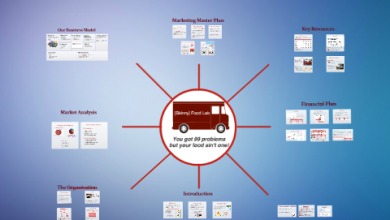CAB Meeting: Optimizing Change Management in ITSM

In the world of IT Service Management (ITSM), effective change management is crucial to ensure that any alterations to IT services are carefully planned, evaluated, and executed. One of the critical processes in ITSM that facilitates successful change management is the CAB Meeting. But what exactly is a CAB meeting, and why is it so essential? Let’s dive into the world of CAB meetings, understanding their purpose, participants, best practices, and how they can significantly optimize IT operations.
What is a CAB Meeting?
A CAB meeting—short for Change Advisory Board meeting—is a formal gathering where key IT and business stakeholders come together to review, evaluate, and approve or reject changes to IT services. These changes could involve anything from a software update to a major infrastructure overhaul. The purpose of the meeting is to ensure that any proposed modifications are aligned with the organization’s objectives, do not disrupt service, and are in line with regulatory or compliance standards.
In simple terms, a CAB meeting is like a council of advisors who deliberate on whether a change is safe to implement, considering all possible risks and impacts.
Role in Change Management
CAB meetings form the backbone of the change management process. They help companies maintain control over the IT infrastructure by meticulously reviewing change requests. Each proposed change is carefully analyzed for potential risks, conflicts, and impacts on the existing environment. The CAB then provides recommendations on whether the change should be approved, deferred, or rejected, ensuring that only well-vetted changes make it through.
Key Players in a CAB Meeting
For a CAB meeting to run efficiently, it must involve several critical roles:
Change Manager
The Change Manager is the person responsible for leading the meeting. They oversee the entire change management process, ensuring that all steps—from the submission of a change request to its final implementation—are followed. The Change Manager also helps prioritize changes and facilitates the discussion to ensure all key stakeholders provide their input.
CAB Members
CAB members typically include representatives from various departments, such as IT operations, security, finance, and business units. These individuals provide diverse perspectives, ensuring that the change is evaluated from all angles. Their expertise helps identify risks, potential roadblocks, or conflicts with other services or projects.
Stakeholders
Depending on the proposed change, external stakeholders such as vendors or key customers may also be invited to CAB meetings. Their role is to provide insight into how the change might affect external factors and ensure alignment with broader business goals.
How CAB Meetings Enhance Change Management
CAB meetings play a pivotal role in improving the overall change management process. Here’s how:
Reviewing and Approving Changes
By bringing together a group of experts, CAB meetings ensure that all changes are thoroughly reviewed before they are approved. This reduces the chances of hasty decisions that might lead to service disruptions or conflicts.
Reducing Risk and Ensuring Compliance
One of the main goals of a CAB meeting is to mitigate risk. By discussing potential risks and evaluating the change’s impact on compliance requirements, the board ensures that the company remains within regulatory boundaries while avoiding unnecessary disruptions.
Promoting Collaboration
CAB meetings foster collaboration across various departments. With representatives from different teams in attendance, the meetings ensure that changes are considered from multiple perspectives, making the decision-making process more holistic.
Best Practices for Running a CAB Meeting
Running a successful CAB meeting requires careful planning and execution. Here are some best practices to ensure smooth and efficient meetings:
Scheduling and Preparation
The key to a productive CAB meeting is scheduling and preparation. Meetings should be scheduled regularly, and all participants must receive the meeting agenda in advance. This allows them to review change requests before the meeting, enabling more informed discussions.
Effective Communication
Good communication is the foundation of any successful meeting. During the CAB meeting, all members should feel encouraged to share their perspectives. The Change Manager should guide the conversation, ensuring all voices are heard and discussions remain on track.
Documenting Outcomes
It’s crucial to document the outcomes of the meeting, including the decision made for each change request. This ensures there’s a clear record of what was discussed, which can be referred to in future meetings or during audits.
Common Challenges in CAB Meetings
Like any meeting, CAB meetings come with their challenges. Here are some common hurdles:
Time Management
CAB meetings can sometimes get bogged down with too many change requests, leading to time management issues. Prioritizing high-impact changes and setting time limits for discussion can help keep things on track.
Aligning Diverse Perspectives
With participants from different departments, it’s common for CAB meetings to involve conflicting opinions. Finding a consensus can be challenging but necessary to make well-rounded decisions.
Managing High-Stake Changes
Certain changes, such as those involving critical systems, may carry significant risks. These changes can lead to lengthy discussions as the team works to mitigate risk. Having a robust risk assessment process in place can help address this.
How to Optimize CAB Meetings for Better IT Operations
To make CAB meetings even more efficient and effective, many organizations are turning to ITSM software and automation.
Use of Tools and Software Solutions
There are many software solutions, such as Alloy Navigator, that can streamline the change management process. These tools allow you to track, prioritize, and automate certain aspects of the CAB meeting, ensuring nothing slips through the cracks.
Automation in Change Management Processes
Automation can be a game-changer in change management. By automating routine tasks like scheduling, notifications, and change approvals, IT teams can focus more on strategic decision-making, making CAB meetings quicker and more efficient.
Conclusion
CAB meetings play a crucial role in maintaining control over IT environments by carefully vetting proposed changes and ensuring they align with business goals. They foster collaboration, reduce risk, and promote compliance, making them an essential part of the change management process. By following best practices and leveraging modern ITSM tools, businesses can optimize CAB meetings and improve their IT operations.
FAQs
1. What happens in a CAB meeting? A CAB meeting reviews and evaluates change requests to IT services, assessing the risks, benefits, and impact on the business. The board either approves, defers, or rejects the proposed changes.
2. Who is responsible for running a CAB meeting? The Change Manager typically leads the CAB meeting, guiding discussions and ensuring all relevant parties provide input.
3. How often should CAB meetings be held? The frequency of CAB meetings depends on the volume of change requests an organization handles. Larger organizations may hold them weekly, while smaller companies may meet bi-weekly or monthly.
4. How do CAB meetings help in risk management? CAB meetings reduce risks by carefully reviewing the potential impact of each change and ensuring that it aligns with both regulatory requirements and business objectives.
5. Can small organizations benefit from CAB meetings? Yes, even small organizations can benefit from CAB meetings. By formally reviewing and approving changes, smaller businesses can mitigate risks and ensure smooth operations, just like larger enterprises.




